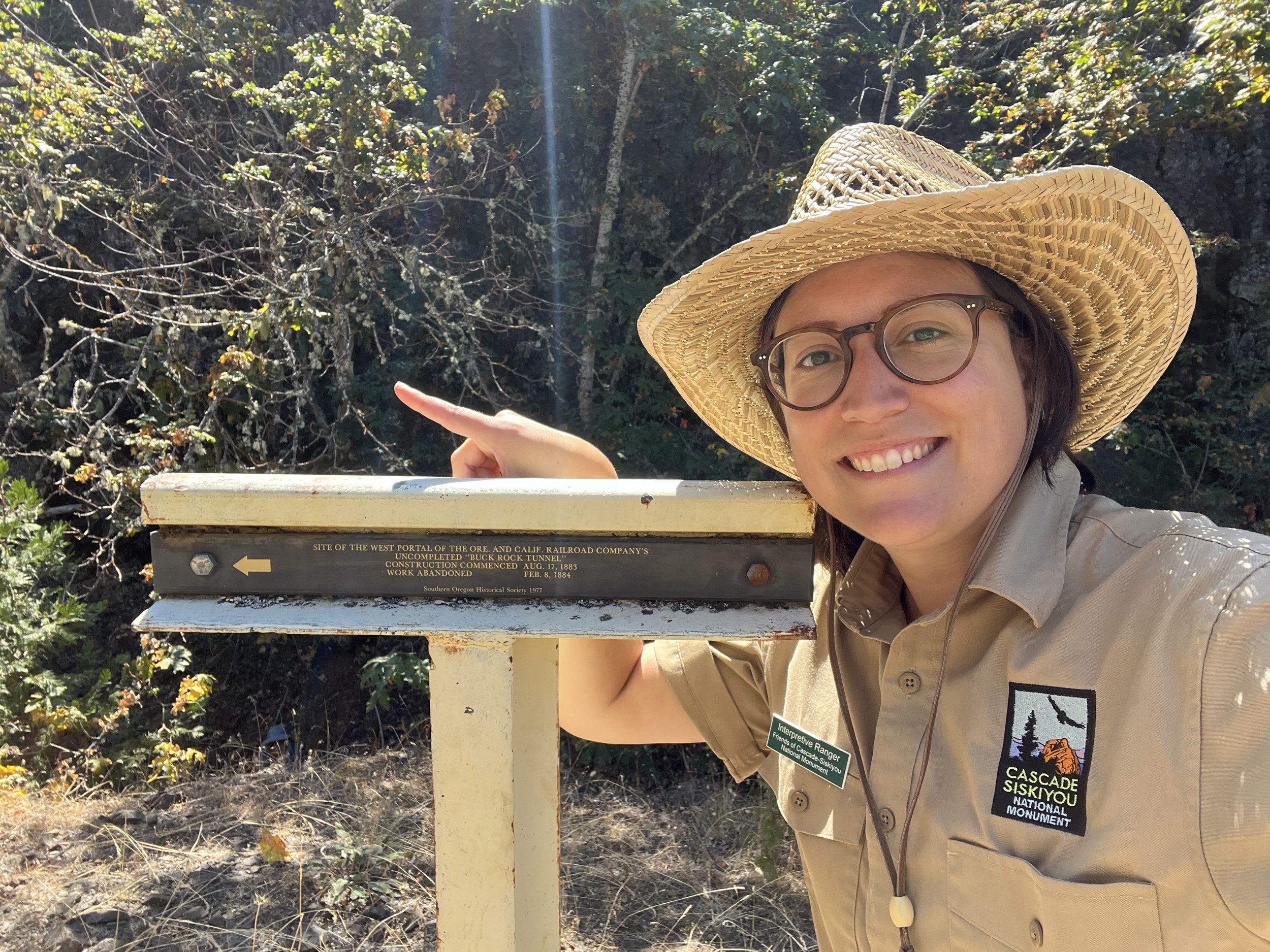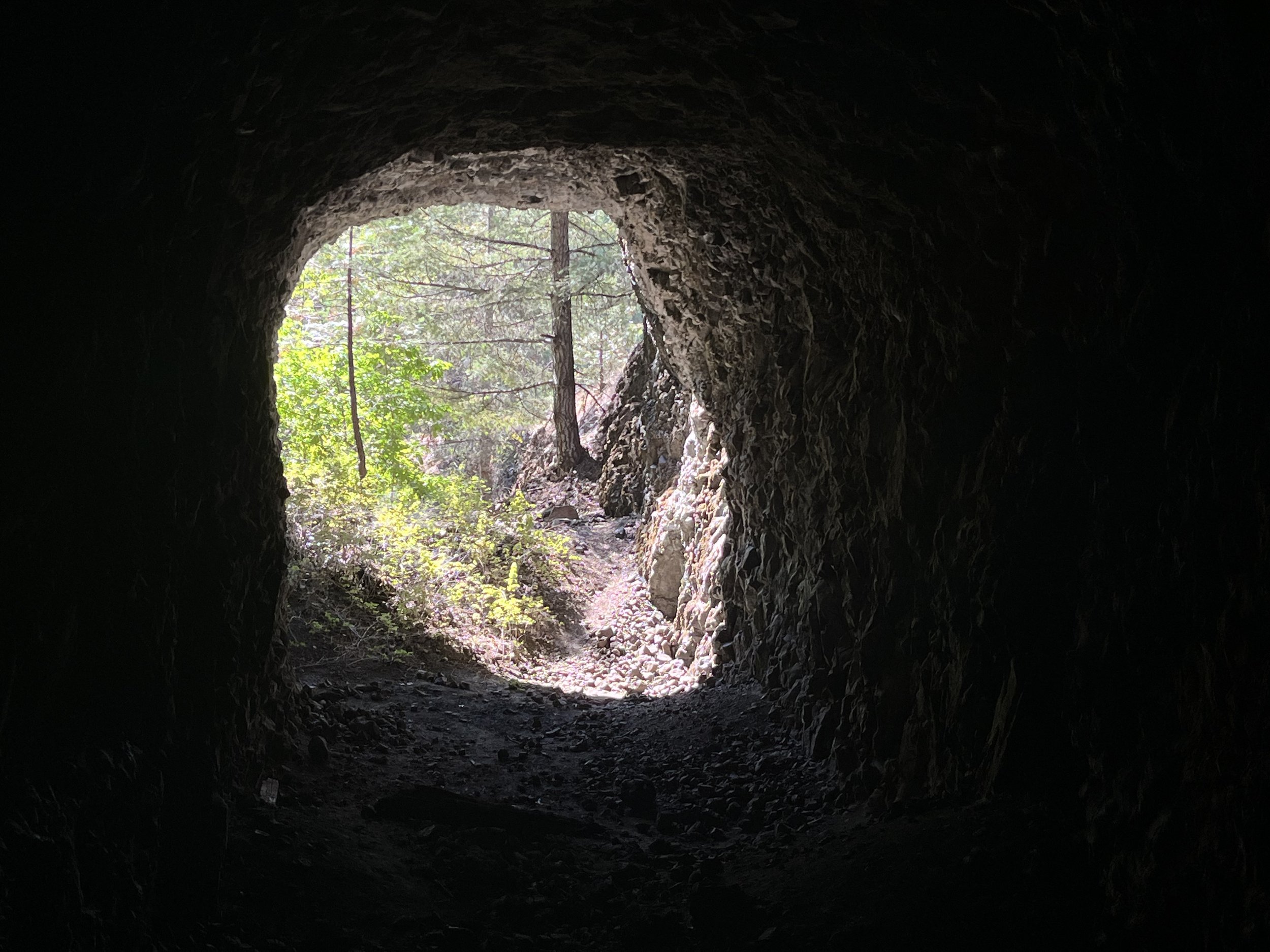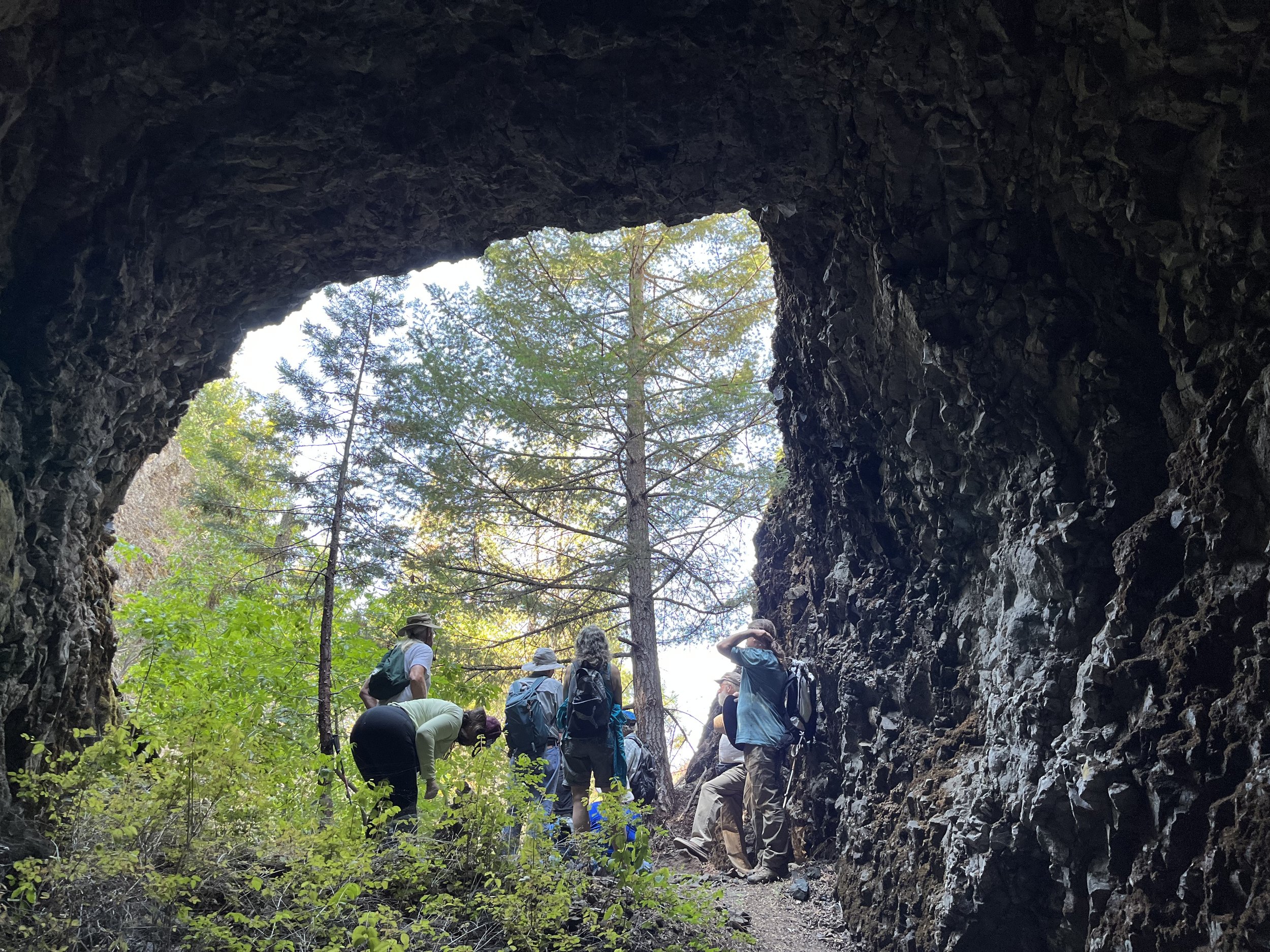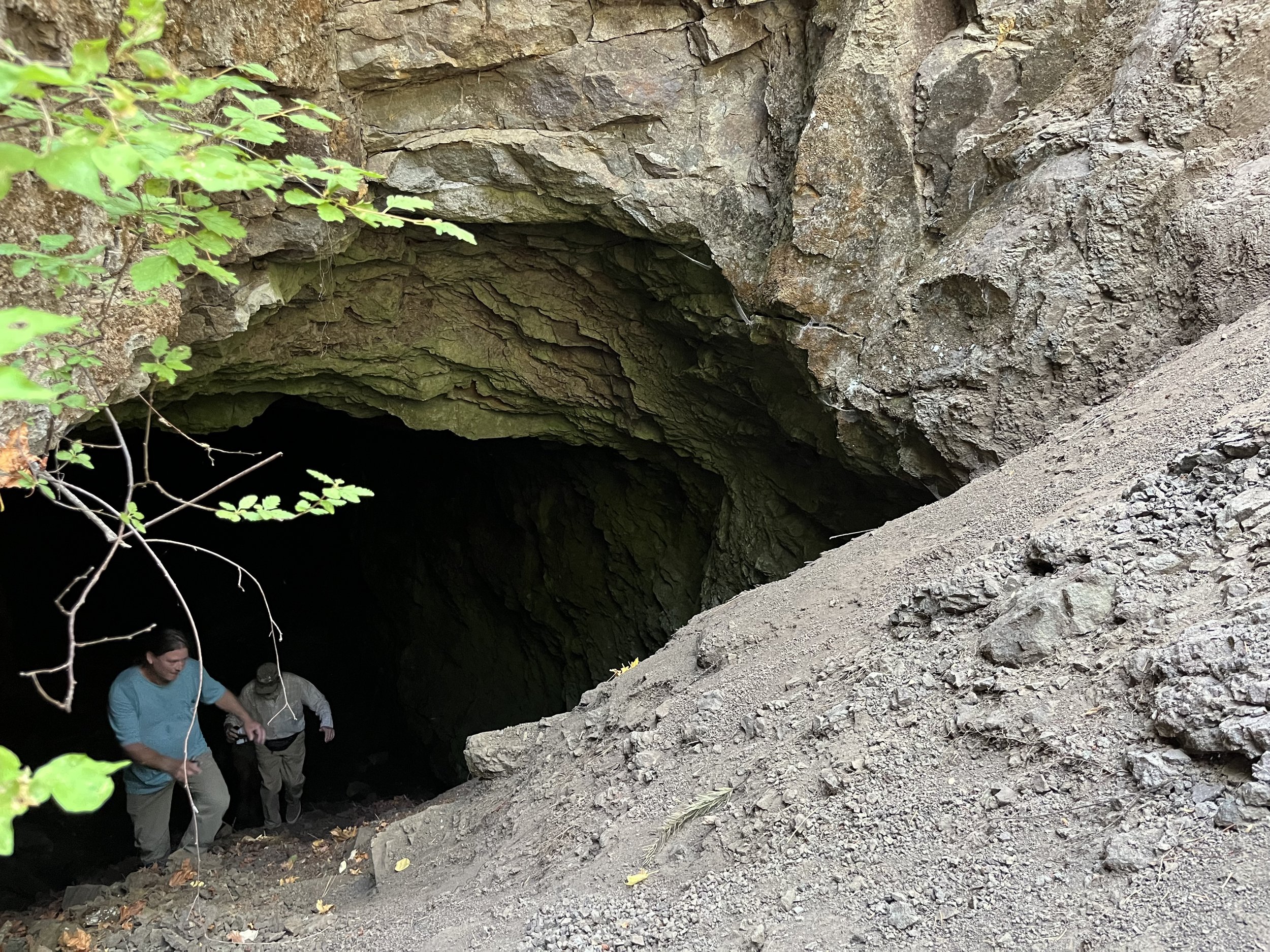Sunday Hike #8 - Historic Buck Rock Tunnel, 8/28/2022
For the final Sunday Hike of the summer, we went back in time to the late 1800s, deep into the Monument to the site of the Buck Rock Tunnel, a railroad construction project that was never completed, left abandoned for decades, and, years later, rediscovered as an archaeological site with a fascinating story to tell.
Here’s the short version. By the mid-1800s, the Transcontinental Railroad had been completed for several years, but a north-south route in the western US was still in development. The final section of the route was the most challenging to construct, across the border of Oregon and California through what is now the Monument. Of course, the Monument is known for its biodiversity, a product of the complex “knot” of terrain where several mountain ranges and ecosystems converge. An engineer hired by one of the railroad companies, John Quincy Adams Hurlbut, surveyed several options before deciding that the Buck Rock Tunnel route was the best option, mostly due to the lower grade. Work started on the tunnel in 1883.
Most of the railroad workers were Chinese immigrants, earning more than what they would working for a farm, but less than their white counterparts on the job. Working for the railroad also came with much greater hazards: dynamite explosions, long hours of hard manual labor, and heat exhaustion, as well as treacherous terrain and an abundance of poison oak, which you can still witness on a hike to the site to this day. They worked day in and day out on both the east and west portals, tunneling on each side to eventually meet in the middle.
However, in 1884 the funds ran low. The tunnel was abandoned. The railroad company prioritized another shorter option over Siskiyou Pass, where I-5 currently runs. That route still exists today, but it’s not often used. Though less miles of track were laid, the grade was much higher; this was fine for the short-term, but over the years the trains found difficulty with the elevation change and snow piling on the tracks. The Natron Cutoff was constructed over the next several years and completed in 1926, which took trains east of the Cascades through Klamath Falls at a much lower grade – where the Amtrak and other routes still run today.
The Buck Rock Tunnel was left unfinished and abandoned for decades until a BLM forester rediscovered the site in the 1970s. Since the tunnel was left mid-construction, it presents a unique look into the building methods employed back in the day. An archaeological investigation found evidence of day-to-day life, like ceramic pieces (some with Chinese calligraphy detail), traces of temporary dwellings, and scraps of food that had been preserved for years. In 2014, the BLM acquired this piece of land and designated it as a historical and cultural site within the Monument. One hopeful future for the Buck Rock area is an interpretive trail to the tunnel entrances, which are currently what we’d call “off the beaten path.”
I really enjoyed sharing this story with a group of 20 hikers, including Friends board member Howard Hunter, who offered a lot of guidance and support in establishing the Sunday Hiking Series for the 2022 season. I would like to give credit to Chelsea Rose, SOU anthropologist and historical archaeologist, who has published numerous papers and articles about her research at the Buck Rock Tunnel site, as well as the Oregon Historical Society and the Chinese Diaspora Project, all of which informed my research on this interesting subject.
Thanks for a great summer, and happy trails!
Words by Interpretive Ranger Sarah Martinez. Photos by Sarah Martinez and Board Member Howard Hunter.









